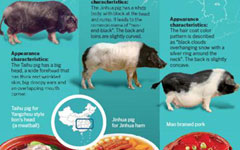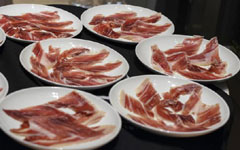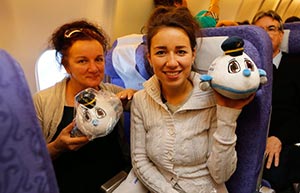Bringing home the bacon
By Zhong Nan (China Daily) Updated: 2014-05-06 15:00China's grain security is facing a challenge caused by excessive imports of breeding pigs, especially from North America and Europe, to enlarge their herds of swine.
Keen to resolve the problems caused by frequent shortages of pig products and rising pork prices in the 1990s, China began to import breeding pigs in large quantities into the domestic market in 2007. The number of foreign pig breeds has soared every year since.
|
 |
|
 |
However, in the hope of making quick money, the majority of pig farmers are inclined to put the pigs straight to work instead of making efforts such as quality checks and selective breeding to develop their businesses in a sustainable way.
"Despite the fact these foreign species can grow faster, have a better fat-to-meat ratio and yield higher returns compared with native species, their quality and future generations will decline. They cannot retain normal survival rates and fertility," said Wang Lianzeng, vice-president of the Beijing-based China Animal Agriculture Association.
Affected by the high mortality rates caused by nationwide crossbreeding, Wang said a sow's reproduction rate in China has declined from 16 piglets in 2006 to 14 last year, with two of them often dying when they grow to between 40 and 55 kilograms (pigs are normally slaughtered at a weight of around 60 to 80 kg in the UK). It costs pig farmers up to 420 kilograms of feed to get them to reach this weight, including feed for the sow and better quality nutrition for piglets.
In contrast to China, the average reproduction rate for a sow is more than 20 annually in the United States and Denmark.
- Diversification key to provinces' success
- Reform is a bright spot amid gloomy data from Q1
- Money market funds must come under controls
- Premier helps launch new expressway
- HED: Shenma search engine looks to take on Baidu
- Oil prices drop on weak Chinese manufacturing data
- China-Africa trade cooperation has broad prospects: Chinese minister
- Factors of various hues take gloss out of mall cosmetics
















